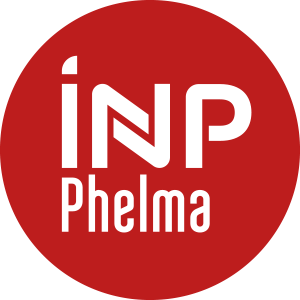Number of hours
- Lectures 0
- Projects 0
- Tutorials 0
- Internship 0
- Laboratory works 16.0
- Written tests 0
ECTS
ECTS 2.0
Goal(s)
The objective of the design study on the normal operation of a Pressurized Water Reactor using the SIREP simulator is to:
• Understand operating procedures from cold shutdown to hot shutdown (155 bars, 297°C) using the P/T diagram, before reactor startup.
• Justify how primary temperature and pressure are controlled depending on P/T conditions.
• Understand the behavior of a subcritical core in the presence of neutron sources.
• Grasp the principle of the subcritical approach (without reactivity information) while avoiding unintended criticality.
• Understand the behavior of a diverged core, whether supercritical or subcritical, at "zero power", i.e., below the nuclear heating threshold (commonly but improperly referred to as the "Doppler threshold").
• Understand and model the behavior of the diverged core "at power" (beyond the nuclear heating threshold, as soon as heating is observed).
• Grasp the importance of thermal feedback effects for reactor safety.
• Understand zero-power physics tests performed during startup to measure certain core neutronic characteristics and compare them with those calculated during core reload safety evaluations.
• Illustrate the moderator effect through a partial realization of one of the startup physics tests: measurement of the isothermal temperature coefficient (?_iso) and its evolution as a function of boron concentration.
• Understand the primary–secondary loop interaction, explaining how a PWR is operated and why a secondary-side incident can lead to a reactivity accident.
• Understand and model the "at power" core behavior before and after grid connection.
• Once connected, understand turbine-following operation, the "natural" core behavior (without control rod movement), and the concept of load-following mode.
• Understand the temperature control program Tm & Tv = f(%Pn) and the benefit of regulating the average primary temperature using control rods (R group).
• Understand the origin of various reactivity effects and how they are controlled during load-following operations (boron/control rod distribution).
• Understand the origin of operational limits to be respected: those directly linked to the power–?Pax relationship (pilot diagram), and those linked to "core margins": "low REC" and "linear overpower".
• Understand the limits of the boron dilution system as the cycle progresses, and how cycle extension is handled when the CB becomes too low.
• Finally, be able to summarize the advantages and disadvantages of the two main reactivity control methods (boron/control rods).
Content(s)
• First session (4 hours):
Chapter 1 – Progression on the P/T diagram before reactor startup
• Second session (4 hours):
Chapter 2 – Subcritical approach and startup
Chapter 3 – Identifying the nuclear heating threshold
• Third session (4 hours):
Chapter 4 – Zero-power physics tests
Chapter 5 – Unit startup and grid connection (Part 1)
• Fourth session (4 hours):
Chapter 5 – Unit startup and grid connection (Part 2)
Chapter 6 – Power operation and load-following
This course is taught in English/French.
Prerequisites
• Operation of Pressurized Water Reactors (PWR): basic principles and main systems
• Reactor kinetics and dynamics
• Reactor physics and neutron transport
• Single-phase and two-phase thermohydraulics
Assessment is based on preparatory work for each session (25%) and a final report (75%) that must include: (a) an analysis of the evolution of physical parameters observed during the simulated transients, and (b) a discussion on control strategies for a Pressurized Water Reactor (PWR). Lab sessions are carried out individually, while the report is written in pairs.
Contrôle continu : CC
Examen écrit Session1 : DS1
Examen écrit Session 2 : DS2
N1 = Note finale session 1
N2 = Note finale session 2
En présentiel :
N1 = % max(TdE, CC) + % DS1
N2 = % max(TdE, CC) + % DS2
En distanciel :
N1 =
N2 =
Commentaire :
This course brings 1.5 ECTS to students in UE Common core
This course brings 2.0 ECTS to students in TU Simulations
[1] Nordine Kerkar et Philippe Paulin « Exploitation des coeurs REP » - Collection Génie atomique INSTN/EDP-Sciences



